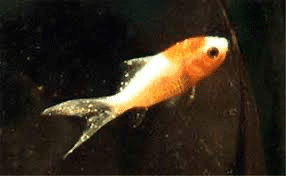Most medications are made for smaller aquariums so you will need to get a big bottle of treatment for a pond, especially in cooler weather.
If the pond is a figure 8, you can work out the formula for each circular section (using Pi x R2 x depth, divide by 1000) and then add the two volumes together.
If you drop the water level in the pond a few inches, you will reduce the amount of water you need to treat so will use less medication. Don't drop the level too much, but you might be able to reduce it 4-6 inches and that will reduce the amount of medication you need to treat the pond.
You can have the pond water level around 12 inches deep for treatment.
------------------
I spoke to the company and they say to repeat treatment every 3 days.
------------------
The medication kills the white spot parasites within minutes but you can only kill the parasites when they are in a free swimming stage. The parasite has 3 stages and can only be killed in one of those stages.
1st stage is where you see white dots on the fish. This is the parasite inside a cyst type structure. It is glued to the fish and is feeding off the fish. You cannot harm the parasite at this stage.
2nd stage is where the parasite falls off the fish and sits on the bottom of the tank/ pond. It is still inside its cyst and is still safe from medication. While sitting on the bottom of the pond, the parasite is multiplying inside the cyst.
3rd stage is where the cyst on the bottom ruptures open and releases hundreds of new parasites. The baby parasites swim around the water looking for a new host. This is the only time you can kill them, while they are swimming around and before they attach to a fish.
-----
You need to keep treating for at least one week after all the spots have gone. Because of the cooler weather, you might need to keep treating for 2 weeks after all the white dots have gone because the parasite develops slower in cold/ cool water.
If it was the middle of summer and the water was 26C, then treating for 1 week after all the spots were gone would be sufficient. However, because we are in autumn and the water is cooler it will take longer for the parasites to get to the free swimming stage where they can be killed.
The following link has more information about white spot and treating it. Post #1 and #16 might interest you.
This is a common question that is often asked, what is ich and how is it recognisable and what causes it? The real term is ICHTHYOPHTHIRIASIS. OR commonly known as white spot. It is an extremely comon parasite that affects aquarium fish. It is highly infectious and potentially lethal and...

www.fishforums.net




